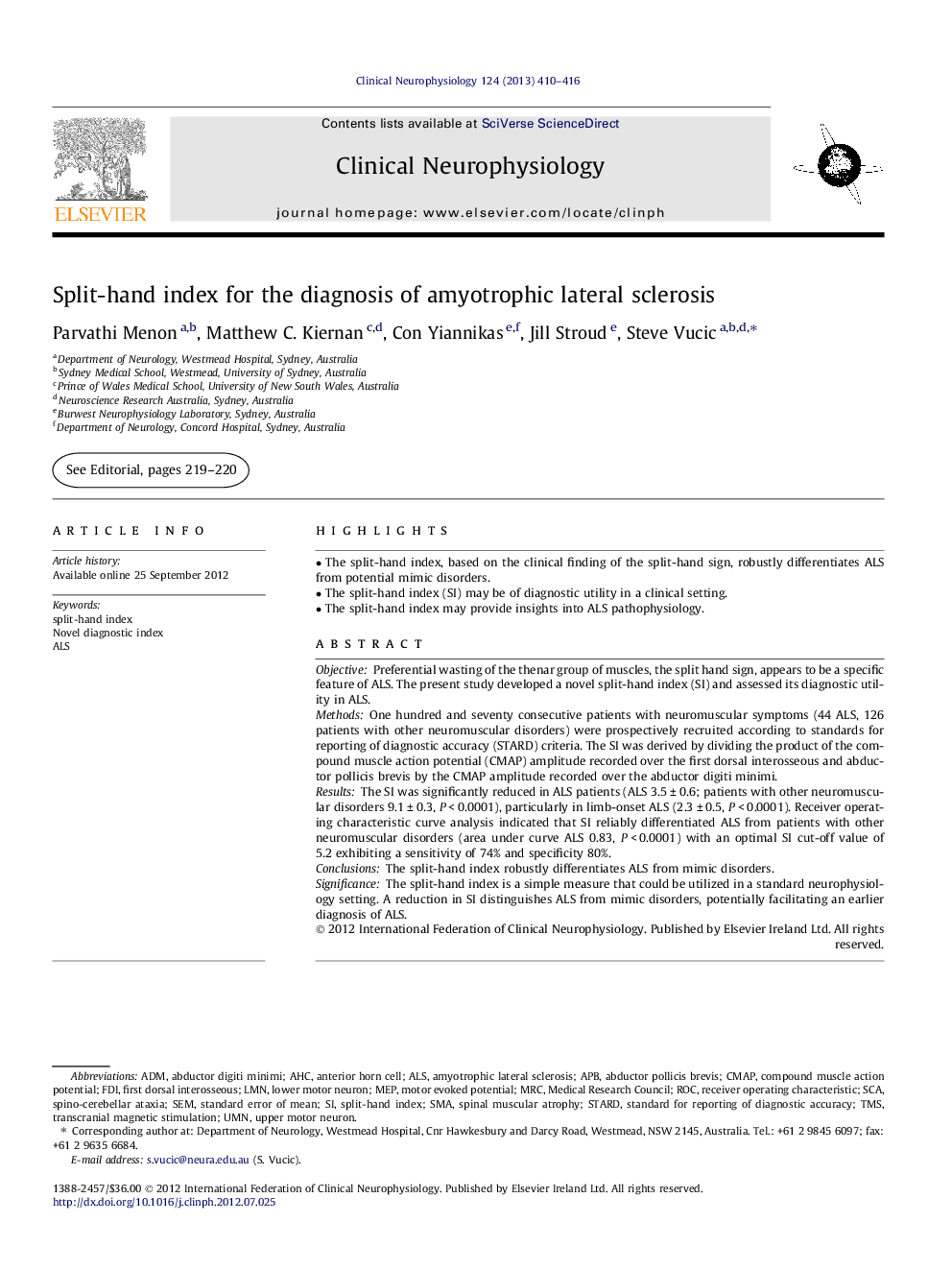| Article ID | Journal | Published Year | Pages | File Type |
|---|---|---|---|---|
| 3044623 | Clinical Neurophysiology | 2013 | 7 Pages |
ObjectivePreferential wasting of the thenar group of muscles, the split hand sign, appears to be a specific feature of ALS. The present study developed a novel split-hand index (SI) and assessed its diagnostic utility in ALS.MethodsOne hundred and seventy consecutive patients with neuromuscular symptoms (44 ALS, 126 patients with other neuromuscular disorders) were prospectively recruited according to standards for reporting of diagnostic accuracy (STARD) criteria. The SI was derived by dividing the product of the compound muscle action potential (CMAP) amplitude recorded over the first dorsal interosseous and abductor pollicis brevis by the CMAP amplitude recorded over the abductor digiti minimi.ResultsThe SI was significantly reduced in ALS patients (ALS 3.5 ± 0.6; patients with other neuromuscular disorders 9.1 ± 0.3, P < 0.0001), particularly in limb-onset ALS (2.3 ± 0.5, P < 0.0001). Receiver operating characteristic curve analysis indicated that SI reliably differentiated ALS from patients with other neuromuscular disorders (area under curve ALS 0.83, P < 0.0001) with an optimal SI cut-off value of 5.2 exhibiting a sensitivity of 74% and specificity 80%.ConclusionsThe split-hand index robustly differentiates ALS from mimic disorders.SignificanceThe split-hand index is a simple measure that could be utilized in a standard neurophysiology setting. A reduction in SI distinguishes ALS from mimic disorders, potentially facilitating an earlier diagnosis of ALS.
► The split-hand index, based on the clinical finding of the split-hand sign, robustly differentiates ALS from potential mimic disorders. ► The split-hand index (SI) may be of diagnostic utility in a clinical setting. ► The split-hand index may provide insights into ALS pathophysiology.
